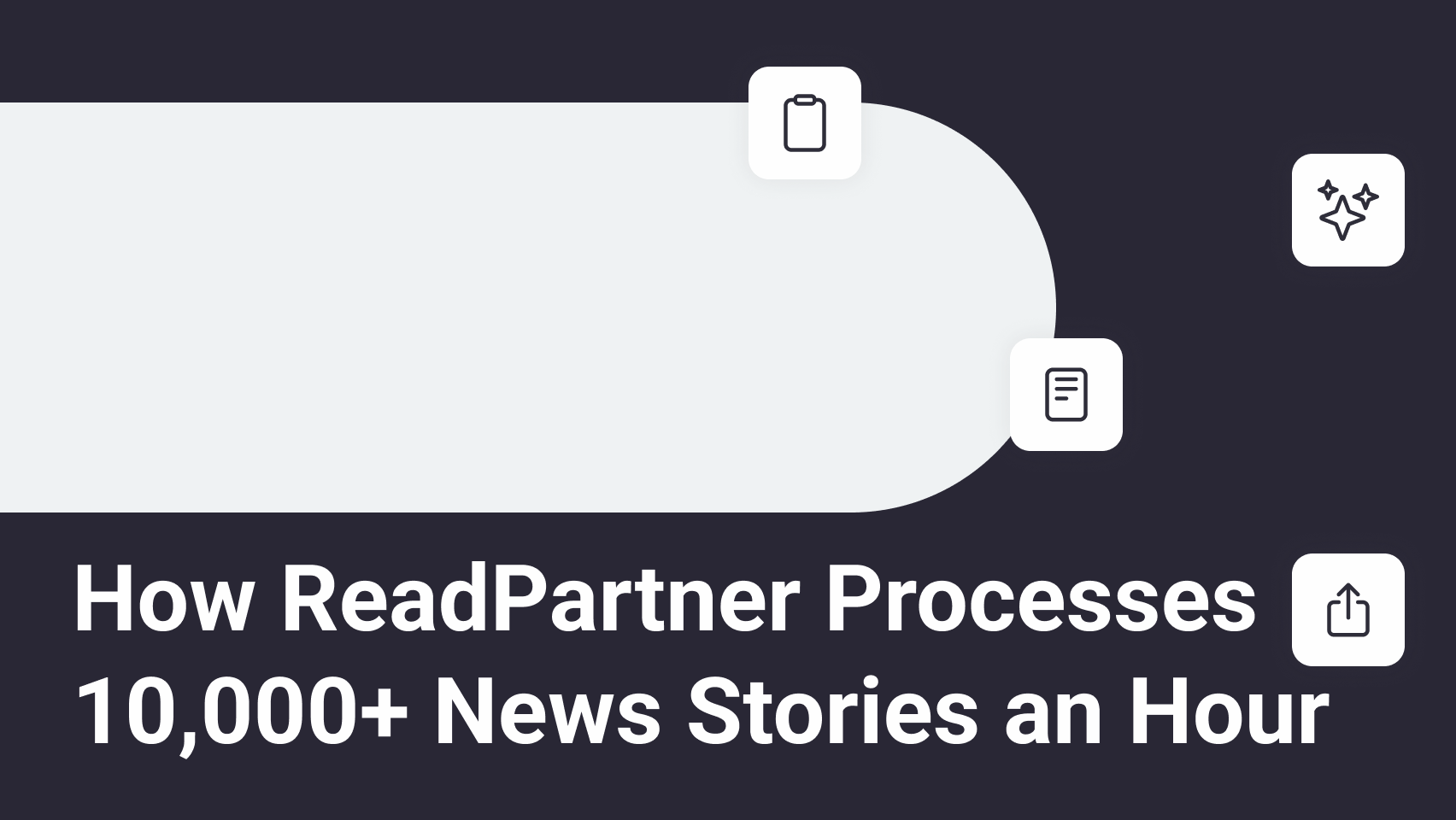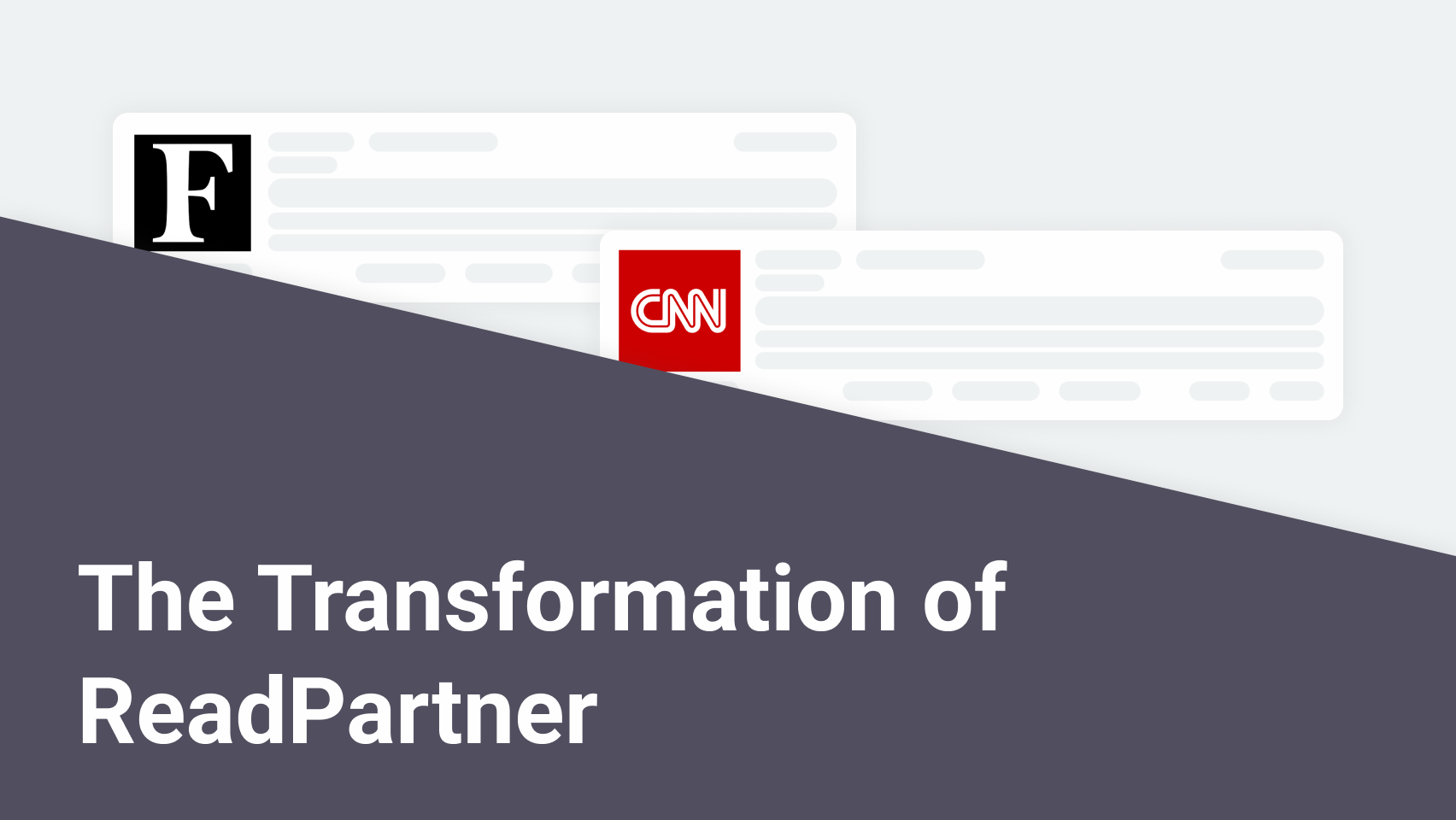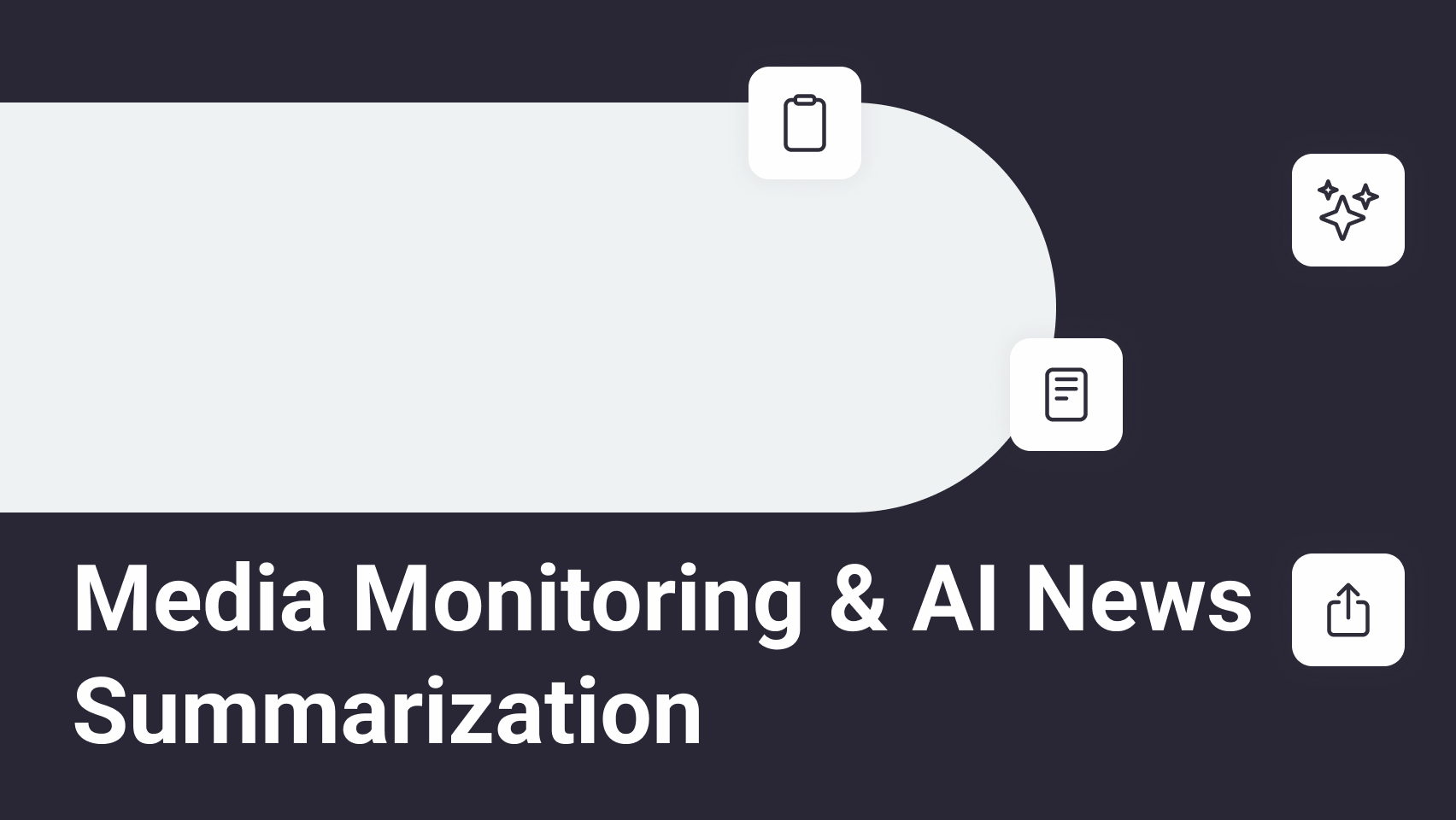How Does ReadPartner Process Thousands of News Stories Every Hour

The modern age of information brings opportunities and challenges. To handle both effectively, businesses, media teams, and professionals rely on up-to-the-minute information to track developments, manage reputation, and keep an eye on trends. In order to make this possible and efficient, ReadPartner Inc. invests heavily in its infrastructure, which allows it to process and deliver thousands of news stories every hour, ensuring that users get an accurate and up-to-date understanding of the informational landscape.
The ingestion layer and the data flow
ReadPartner gathers content from a wide range of public sources, including:
- Online news websites
- RSS feeds
- News aggregators
- Social media channels
- Press release hubs
- Google News
- Newsletters
This wide range of sources ensures the coverage is global and diverse. This helps all businesses and specialists to receive the media coverage they need, eliminate blind spots, and provide balanced viewpoints.
The stability of this considerable data flow is supported by ReadPartner’s flexible architecture and distributed data processing that is run on servers across different continents. On top of providing an extremely robust network with high processing power, this allows ReadPartner to stream news in near real time for the users so they can run monitoring campaigns with high efficiency and minimal reaction time. Moreover, distributed processing makes it possible to easily scale the network, making handling increasing loads a no concern.
How content gets processed
Once the news stories are pulled in, the system cleans and organizes them. Only publicly available material is collected, just enough to build previews and identify trends, staying within fair-use guidelines.
Each article goes through a standardized process: formatting is stripped, key details, such as headline, timestamp, and source, are extracted, and everything is restructured into a uniform format, making it easier to analyze and display information.
Each generated preview can be clicked through to read the full story from its original source as the goal is not to try and replace the article. Instead, ReadPartner gives users a clear preview with analytical data, but lets them decide what to explore further.
Text analysis at scale
To handle the information accurately at a large scale, ReadPartner applies natural language processing (NLP) algorithms, which enable computer systems to understand and interpret human language. A wide range of features is supported or enhanced by NLP:
- Analyzing trend data
- Creating concise summaries of latest developments
- Identifying sentiment: positive, neutral, or negative
- Categorizing content by theme or topic
- Providing data that feeds into reports and dashboards
- Analyzing the popularity of news stories
This allows users to see more than just headlines: they can quickly understand tone, relevance, and context simply by looking at the data provided by ReadPartner’s algorithms.
Event detection and user alerts
An important part of the platform is its trend detection feature. When users choose keywords to follow, the system tracks how often they appear in the media over time, and what the sentiment distribution is. If there is a noticeable jump, for example after an announcement or unexpected event, the platform creates an alert and sends it to the user directly on the platform. These alerts can also be configured to be received to external channels like email or Slack.
This helps users spot unusual activity at a glance allowing for immediate action to be taken. Real-time alerts are particularly valuable for professionals working in fast-paced environments, such as journalists, PR professionals, or crisis managers. A keyword suddenly spiking in media coverage can indicate the start of a breaking news story, a viral reaction, or a brewing crisis. The system can flag such shifts within minutes, enabling journalists to get ahead on the story before it is widespread, allowing PR professionals to capitalize on viral events, and crisis managers to start getting the situation under control as quickly as possible. Paired with sentiment cues and summaries, the alert system not only notifies of sudden changes, but also provides crucial context, clarifying if the trend is driven by praise or criticism.
Turning raw data into clear picture
All that information needs to be presented in ways people can use. ReadPartner provides several formats to help users digest the information easily:
- News is presented as clear snippets of the developments. They include additional analysis tags such as sentiment and engagement.
- Media Intelligence visualizes data as plots over time so the trends are readily apparent to users. They include additional information such as relative popularity of keywords, and news stories contributing to that popularity.
- Keywords overview, which uses AI-powered algorithms, is available for tracked topics to present the latest developments in a user-created feed, enabling ReadPartner’s clients to quickly grasp the news without dedicating a large portion of their time to scan through them manually.
- ReadPartner’s AI is capable of building executive-ready reports based on the latest news. These reports are configurable and can suit different needs, such as presenting the gist of the latest developments and visualizing keyword mentions and trends, making it easy for busy executives to understand what is going on and take action.
These tools are designed to save time and keep users focused on the big picture. ReadPartner helps make the data usable, be it reviewing campaign results, preparing a media brief, or scanning competitor mentions.
Facilitating strategic news consumption
One of the important considerations that were kept in mind when designing ReadPartner’s algorithms is the fact that news can be overwhelming. It is no secret that constant exposure to news can lead to stress, anxiety, and overload paralysis, which can damage both a person’s wellbeing as well as their productivity. But can news monitoring be done effectively while avoiding those adverse effects?
“The solution is not to avoid the news because it stresses you out. Instead, you need to check in strategically.” – says Bryan McLaughlin, an associate professor at Texas Tech who researches the implications of problematic news consumption.
This principle is core to ReadPartner’s processing algorithms, which were designed to provide the user with only the most important information in a non-overwhelming way. The relevance, appropriate context, and clarity are always much more valuable than sheer volume, because this approach brings actionable insights to the user and avoids causing stress and overloading users with information to the point of utter confusion. Paired with advanced feed filters and AI tools such as summaries and reports, ReadPartner is always able to highlight what truly matters in a format that supports clarity and focus, promoting both strategic news consumption and strategic decision making.
Keeping the data safe
ReadPartner’s thoughtful design extends past information processing and delivery. Security is at the core of how all data is handled at ReadPartner. From the moment it enters the platform, it is protected by SSL encryption in accordance with the latest industry standards. ReadPartner is fully compliant with both GDPR and CCPA, ensuring the personal data is handled responsibly. To further enhance security, all user data is anonymized and encrypted both in transit and at rest. Together with robust backup and recovery protocols, ReadPartner is able to ensure data safety and service continuity even in the event of unexpected disruptions, such as cyber attacks or system failures. This level of protection ensures businesses and professionals have the confidence that sensitive information remains private at all times.
Conclusion
What makes ReadPartner effective is not simply its ability to process a huge volume of stories, it is how that information is cleaned, filtered, analyzed, and delivered. The system is built around a few clear ideas: collect responsibly, analyze intelligently, and present data in ways that actually help users.
This results in better awareness, faster decisions, and fewer missed developments. Communication teams, analysts, or executives have the clarity they need without unnecessary media noise getting in the way.
FAQ
References
- “How to Keep Up with the News Without Getting Overwhelmed” by HBR
https://hbr.org/2025/01/how-to-keep-up-with-the-news-without-getting-overwhelmed
Stay ahead of media










